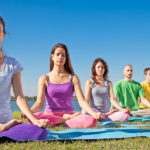In my last post about this study (1), I described how four months of pranayama practice affected respiratory function in elderly yoga practitioners. Today, we take a look at how the practice of bhastrika impacted heart rate variability and the functioning of the autonomic nervous system. Before delving into heart rate variability, a review of the autonomic nervous system is in order. The autonomic nervous system…
